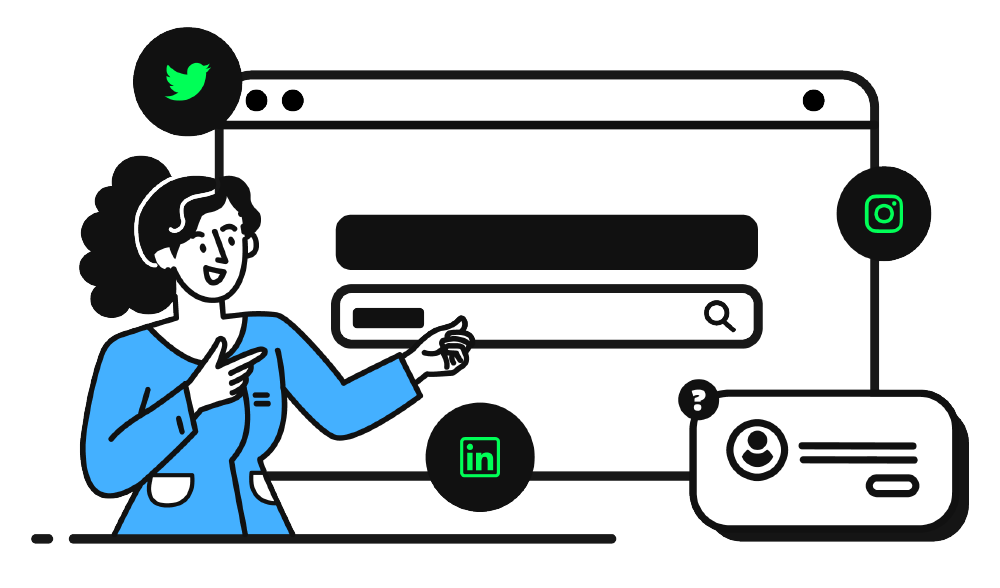How to Complete A Successful Competitor Analysis Template and Guide
Develop a comprehensive understanding of your competitor’s positioning, value propositions, digital marketing efforts, and customer relationships.

Your Competitor Analysis
Our Competitor Analysis template and guide provides you with a step-by-step direction for identifying your top competitors and evaluating their initiatives to determine their positioning, offerings, customer relations, and digital marketing efforts. Equip yourself with the necessary details you need to outperform your competition. Start your process towards developing a comprehensive understanding of your competitors as you look to establish or improve your brand’s authority.
When you complete your Competitor Analysis template and guide, you:
🎉 Let's Get Started
• What industry are you competing within?
• What brands are already thriving in that industry?
• Who are the up-and-coming brands in that industry?
• Who are your target customers?
• Which of your competitors share the same customers as you?
• What problem do you solve for your customers?
• Which of your customer offer the same value proposition as you?
Remember
Your competition analysis is essential to your band’s success because it allows you to identify trends, strategies and stay one step ahead of your competitors. So choose the competitors you want to research efficiently.
Your aspirational competition are the brands that are already thriving in your defined market. They are a prime example of where you would like to be. Use them to set benchmarks and understand what the industry standard is.
Your direct competitors are the brands in your market that offer the same product(s) or service(s) as you do to the same type of customers.
Your indirect competitors are those who don’t offer the same product(s) or service(s) as you but provide something similar to a customer group you are looking to serve.
It’s essential to stay one step ahead. For your up-and-coming competitors, think of those companies in your market that may not be competing with you yet, but could potentially develop into a direct or indirect competitor.
Answer the Following
• Company Name?
• Where are they located?
• What is their website?
• What is your competitor's market dominance?
• How long has your competitor been in business?
• Is your competition expanding?
• Can you estimate your competitor's growth rate or revenue?
• What social platforms do they engage their customers?
Ask Yourself
• What story are your competitors communicating?
• How is your competition positioning itself?
• What are some repeated phrases or text?
• What features/products are they emphasizing?
• What customer pain points are they openly addressing?
• What problem are they promising to solve?
• What is the process to work with them?
• What does the first set of text on their website homepage communicate?
Ask Yourself
• What is their flagship offer?
• What product features are unique to your competitors?
• What are the price points for their offer?
• What is the minimum price your competitor charges?
• How many of their offers are the same as yours?
• How does their offer make your customer's life better, easier, or both?
• Do they have multiple offers?
• Do they value-bundle their offers?
• Does your competitor support multiple environments?
• Do their offers provide any secondary benefits?
• How do they deliver on these offers?
• What is their sales process - what channels does it involve, how long does it take, how involved is the sales team?
Ask Yourself
• Do they advertise on Youtube, Facebook, Linkedin, Twitter, or other social media platforms?
• Where else do your competitors advertise?
• What keywords are they buying on Adwords?
• Do your competitors focus on specific verticals?
• How does your competitor market its product?
• What does their welcome email series look like, if any?
• Do they participate in events, meetups, conferences?
• Do they have a podcast?
• Do they have a blog?
• We suggest you take the time to sign up for their email or newsletter.
• Do they have a FAQs section?
• Do they create guides or ebooks?
Ask Yourself
• What platforms are your competitors using?
• Which of those platforms is working for your competitors?
• Do the conversations vary from platform to platform?
• What content are they sharing, and is it currently working for them?
• What are the demographics of your competitor's followers?
• What kind of content are they posting?
• Where and how are they driving traffic?
• How does your competition interact with their followers?
• Are they working with any influencers?
• What hashtags are they using, if any?
• What companies or individuals is your competition selling too?
• Who is their primary decision-maker/buyer?
• What does their customer want and need?
• What are their customer's daily struggles that your offer can help solve?
• What do their product or service reviews look like?
• What are the recurring complaints or successful reviews?
• What do positive customer results reveal?
• How do the negative customer results provide you with an opportunity?
• What’s the Net Promoter Score (NPS) of your competitors?
• How often does your competition respond to their customer reviews?
• How often does your competition respond to their customer service questions on social?
• Builtwith - a website profiler, lead generation, competitive analysis, and business intelligence tool providing technology adoption, eCommerce data, and usage analytics for the internet.
• SEMrush - helps you understand your competitor's focus in search engine marketing, including best-performing keywords, along with their spend.
• NielPatel - is an SEO and website analyzer that will help you break down your competition, identify better SEO keywords, and improve your website's traffic.
Your Completed Competitor Analysis Template and Guide
Your Next Steps
Now that you have the clarity and the necessary details you need to outperform your competition, it’s time to identify and benchmark your strengths, weaknesses, threats, and opportunities within your industry. Gain clarity, focus, and the introspection you need to strategically enter new markets or engage in any new or revamped initiatives. Learn More Here.
The power to succeed in the palm of your hand.
✔️ Take control from anywhere.
✔️ Collaborate & manage with ease.
Learn More About Notion
